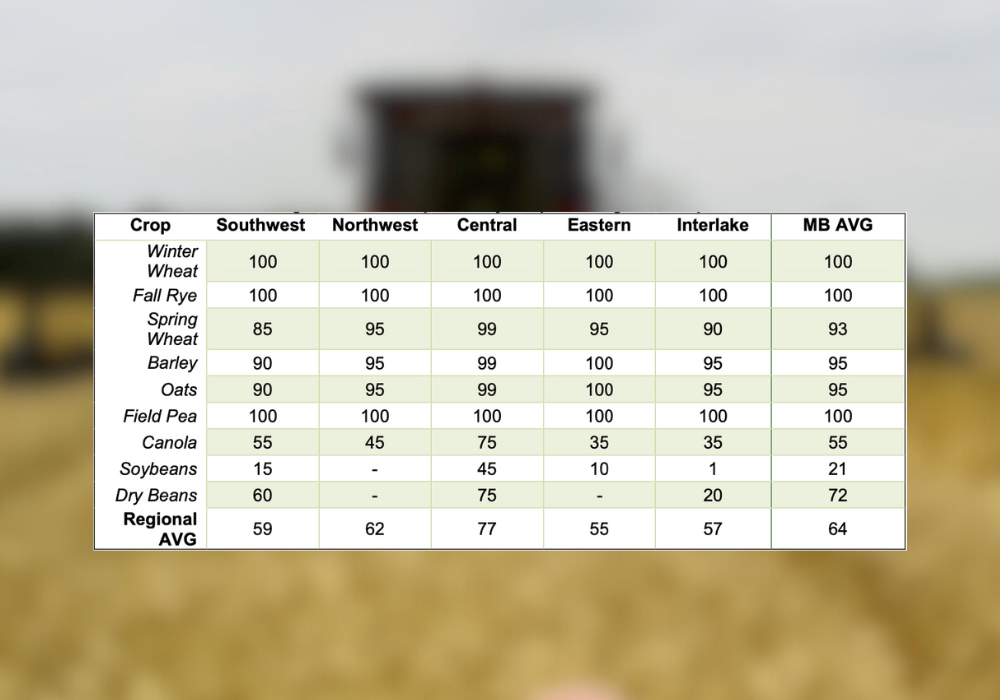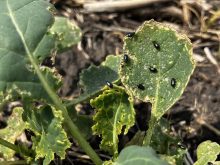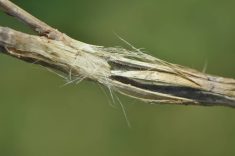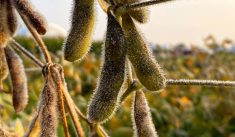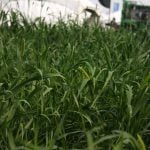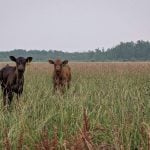Overview
Harvest progress sits at 64 per cent complete across the province (see at top), which is ahead of the 5-year average (54 per cent). Harvest continues in spring cereal crops, with barley at 95 per cent complete, oats at 95 per cent complete and spring wheat at 93 per cent complete. Overall, cereal crops remain in fair to mostly good condition.
Many corn fields had achieved growth stage R6 and were drying down. Canola harvest continues with approximately 55 per cent of the acres being harvested across the province. Soybean fields are mostly in the R7 to R8 growth stages with harvest progress sitting at 21 per cent provincially.
Read Also
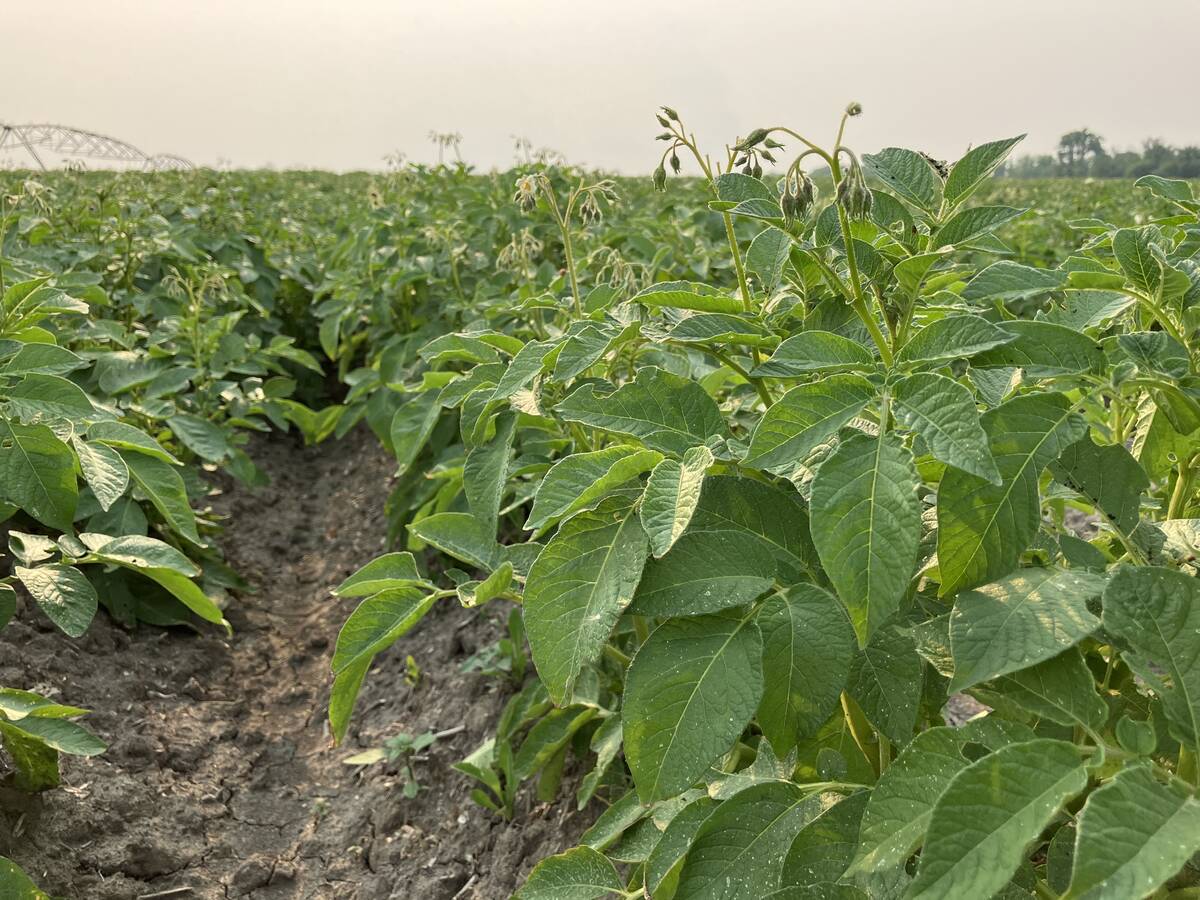
Potatoes join Innovation Farms testing ground
New MacGregor site adds potato farming to FCC and EMILI’s agriculture tech initiatives in Manitoba.
Producers are encouraged to scout their fields for weeds that have escaped control. This is an important part of integrated pest management. Waterhemp has been found in the Central and Eastern regions and producers should seek identification of any unusual pigweeds in their fields.
Cereals
Spring wheat yields range from 35 to 70 bu/acre, with highs of 90 bushels and a low of 16 bu/acre in the driest regions. Protein levels range from 13.5 per cent and higher and grading #1 or #2 Canada. Oats have been yielding 90 to 130 with highs of 170 bu/acre, with some in the driest areas as low as 60 bu/acre being reported. Barley yields are between 70 and 100 bu/acre.
The spring wheat quality is rated mostly fair to good.
Many corn fields had achieved growth stage R6 (“black layer” or physiological maturity) and were drying down.
Oilseeds
Canola harvest continues with approximately 55 per cent of the acres being harvested provincially and 75 per cent complete in the Central region. Overall crop condition ranged from fair to mostly good.
Sunflower fields are transitioning from the R9 (bracts becoming yellow and brown (growth stage). The crop remained in good to excellent condition.
Flax crop growth stages ranged from late stage 11 (brown capsule) to stage 12 (seed ripe) with lots of variability being noted in fields. Flax harvest in the Central region continues with approximately 40% of the acres being harvested. The crop remained in fair to mostly good condition.
Pulses and Soybeans
Soybean fields are mostly in the R7 to R8 growth stages with some harvest progress at 21% provincially. Yields have been variable and dependent upon summer rainfall. Yield ranges from 20 to 30 on the earliest harvested fields to 30 to 40 plus bu/acre over the last week. Overall crop condition remains good.
Dry bean harvest is approximately 72 per cent complete. Yield ranges from 1200 lbs/acre to 2500 lbs/acre are being reported.
Forages & Livestock
Forages
Corn silage harvest is well underway throughout the eastern region. Unfortunately, operations were interrupted on Thursday and Friday of last week due to scattered rain showers. There is a big push to get dryer fields chopped and into piles before forecasted rain hits again towards the end of this week.
Straw is being baled for bedding and for cattle feed.
Beef producers continue to chip away at second cut from fields that are predominantly grass and are baling straw as it becomes available.
Some producers are considering taking second cut on alfalfa fields that are in full bloom towards the end of this week. This is because we are coming close to three weeks past the critical harvest date of
September 1, the alfalfa’s root reserves should be well charged, and minimal regrowth is expected.
Forage growth on hay & pasture is mostly finished due to dry conditions and nearing the end of the
growing season.
Light frost in parts of the region in the Northwest region have producers concerned over nitrates in their annual crop silage and greenfeed still standing, and are advised to feed test their annual crops for nitrates prior to feeding
Livestock
Some producers are supplementing hay on pasture to ensure nutrient requirements of cattle are being met and to take pressure off the grass. A handful of producers are beginning to move cattle onto fenced hayfields or harvested cropland to graze available regrowth and/or stubble.
Water levels in dugouts are low. This is of particular concern on pastures located in areas that have consistently missed out on rain.
Grass conditions on pasture are dwindling as we progress further into the fall and plant growth naturally slows. The status of individual pastures continues to be highly dependent on moisture levels, grazing management strategy, and soil type.
Some producers are hauling cows home and taking calves to the auction marts.
Flies are still out in abundance, grasshoppers chewing down what little is left of pastures.
Several producers are moving cattle to fall grazing areas and more cattle are hitting the auction marts as producers take advantage of the wet days to work with livestock.
Pastures have a new sense of green in the stand due to the recent rainfall in the Southwest region.
Regional Comments
Southwest
Humid and wet weather early last week in the Southwest. The majority of the region received 5 to 15 mm of rain. The temperature was also starting to decrease during the day and night. There was below-zero temperatures for a few hours in some parts of the region. A slower week of harvest as some rains during the week and cloudy days reduced harvest hours for producers. The maximum daytime temperature was 27.4 C and the minimum -2.6 C recorded during last week.
Spring wheat harvesting continued this week with several producers achieving up to 80 to 85% complete. Yields look to be average to slightly above average with a good 13.5 per cent protein. Yields range from 55 to 75 bu/acre, depending upon the moisture conditions during the growing season. Barley harvest is 90 per cent complete. Quality and yields are average. Oat harvest is 90 per cent complete. Producers can get at standing crops faster than swathed crops but by midweek, all fields were dry. Yields look to be average and recent rains are affecting the quality of the grains.
Canola harvest is 55 per cent complete. The yield range is 35 to 45 bu/acre. Canola that remains to be harvested is what was seeded after the May long weekend, which is highly variable and needs time to mature.
Soybeans are at the late R7 to R8 stage. Temperatures were below zero in some areas during the night but no major damage to soybean crops at this stage. Harvest is 15 per cent complete. No yield reports yet. Recent rain has helped pod fill and later seeded beans.
Corn is physiologically mature with the black layer in the seed, heights are variable due to drought conditions, silage is past its optimum stage, and now producers are more on the dry side at 50 per cent moisture or less. Corn silage is underway at approximately 70 per cent complete.
Northwest
Another good week of harvest progress, with a slight pause at the end of the week due to rain. Most of the region received frost early in the week, with varying temperatures. Alonsa weather station recorded the lowest overnight temperature at -2.9 C. Some frost damage were evident in corn and soybean crops, depending on the stage of crops and degree of frost. Daytime temperatures reached mid to high 20’s over the weekend and continued to contribute to good harvest conditions. Yields continue to vary widely and dependent on early season rains.
Spring wheat harvest had another good week of progress, with most areas approximately 95 to 97 per cent done. Harvest in The Pas is slightly behind that at approximately 70 per cent complete. Yields have been ranging from 50 to 90 bu/acre, while some fields have done poorer and some better. Initial reports of quality have been good, however some reports of lower protein.
Canola harvest continued over the week and is approximately 40 to 45 per cent complete. Desiccation and swathing continue as crops reach appropriate stages. Yield reports have averaged from 40 to 55 bu/acre, while some crops have yielded below 40 bu/acre and some above 55 bu/acre.
Field pea harvest is 100 per cent complete. Yields are variable and are mostly dependent on precipitation through the season. Fields with little precipitation ranged from 40 to 45 bu/acre while better fields at 60 to 70 bu/acre. Baling of pea straw is occurring. Some post-harvest field work has been done as crops are removed.
Soybeans are now mostly in the R8 stage and are moving towards maturity. A small start to harvest in the Dauphin area. Some crops may have been touched by frost, but unknown if any damage at this time.
Seeding of fall seeded crops started last week across the region.
Central
Spotty rain showers halted harvest for some, with Portage farmers receiving the most rainfall at 12mm. However, sunny weather allowed producers to quickly return to fields and farmers made decent progress with canola, flax, dry beans, soybean, and potato harvest. Localized frosts are helping to dry down leaves on some crops, with some areas receiving several hours below freezing. Baldur (-3.3 C), Gladstone (-3.3 C), and Treherne (-1.7 C) reported the coldest temperatures.
Harvest of spring cereals is mostly complete, with spring wheat, oat and barley harvest sitting at around 99 per cent. The few remaining fields are in the northwestern reaches of the Central region. Spring wheat yields are highly variable, depending mostly on how much rainfall the crop received during the growing season. Most spring wheat yields have been in the region of 35 to 65 bu/acre, but yields have ranged from as low as 16 bu/acre in extreme cases to 95 bu/acre only a few miles away. Oats have been yielding 80 to 130 bu/acre, with some in the driest areas as low as 60 bu/acre. Barley between 70 and 100 bu/acre.
Corn continues to approach harvest, with fields maturing with the back layer visible in kernels. Most of the crop looks promising, however, fields that have received the least amount of rainfall are in the poorest condition. Most silage cornfields are rapidly approaching harvest, with approximately 60 per cent harvesting already complete and yields ranging between 13 to 15 tonne/ac.
Canola harvest continues, with harvest progress at approximately 75 per cent for the region. Pre-harvest herbicides and swathing is complete. Harvest is expected to quickly progress next week. Yields vary greatly, between 20 and 55 bu/acre, with averages closer to the 30 to 40 bushel range. Some fields still achieved high canola yields, with some in the north of the region around Elie achieving 70 bu/acre yields, and around Portage 60 bu/acre in some cases. Flax harvest is underway, with approximately 40 per cent harvested. Sunflower fields are at the R9 (bracts becoming yellow and brown).
Soybean harvest continues with approximately 45 per cent harvested. Most soybeans are between R7 and R8 (95 per cent brown pod). Earliest soybean yields are mostly between 20 to 25 bu/acre. Over the last week, yields have improved to the 30 to 40 bu/acre range. Cutting and harvest are underway for dry beans, with harvest standing at approximately 75 per cent. Edible bean yields are in the region of 1200 to 2500 lbs/acre.
Eastern
Rainfall accumulations over the reporting period ranged from trace amounts to less than 10 mm. Most of these accumulations occurred as intermittent showers or drizzle that touched every district in the region from Thursday to Saturday of last week. This rainfall, coupled with seasonal to below seasonal temperatures slowed harvest and field work progress. Localized light frosts occurred on Tuesday and Wednesday mornings last week. No yield or quality losses were expected to result from these events given that crop were well advanced but damage to top leaves on corn and soybeans was noted in some fields. Producers look forward to making significant progress on canola and soybean harvest this week if weather allows.
Spring wheat harvest was about 95 per cent complete. Average yield on spring wheat has been better than expected at around 70 bu/acre with 13.5 per cent or higher protein levels and grading #1 or #2 Canada. Oat harvest was complete with yields at around 130 bu/acre on average and good bushel weights. Barley harvest was also complete with yields averaging out at around 100 bu/acre. Spring cereal harvest is expected to wrap up this week if weather allows.
Many corn fields had achieved growth stage R6 (“black layer” or physiological maturity) and were drying down. Crop advancement slowed somewhat due to the weather over the last week. The majority of the crop remained in good to excellent condition. A limited number of fields on lighter soil profiles located in low rainfall areas were showing signs of moisture stress and drying down prematurely.
Sunflower fields were at the R9 (bracts becoming yellow and brown (growth stage). Producers were monitoring bract colour change and the weather while making plans for desiccation. Because of the weather last week, crop advancement slowed but desiccation of some crops could begin this week if weather is supportive. The crop remained in good to excellent condition.
Most canola crops in the region were harvest ready or close to harvest ready and needing only a bit more dry- down time. There was limited progress on canola harvest last week because of the weather with about 35 per cent of acres now harvested. Current yield estimates were around 60 bu/acre on average with good quality. Canola harvesting is expected to become the main focus of growers this week if the weather is suitable. Swathing and pre-harvest herbicide applications were essentially complete.
Flax crop growth stages ranged from very late stage 11 (brown capsule) to stage 12 (seed ripe) with lots of variability being noted in fields. Because of the weather last week, crop advancement slowed but desiccation of some crops could begin this week if weather is supportive. The crop remained in fair to mostly good condition.
Soybean harvest had begun last week with about 10 per cent of acres harvested. Most soybean fields were somewhere in the very late R7 (one or more brown pods on the main stem with lots of leaf drop) to R8 (95% brown pod/physiological maturity) and drying down. Some pre-harvest applications will continue on select fields to either control rank weed growth or desiccate the crop and speed up harvest. Overall crop condition remained good on most fields
Interlake
The South Interlake area received about 4mm of rain. Some producers in both the south and north Interlake reported frost at -20C occurring the middle of last week. Producers are reporting no damage by frost due to crop advancement/maturity stage. Daytime temperatures have declined to a certain extent with average daytime high temperatures falling below 20 C.
Last week saw limited harvest activity, following light showers on and off midweek in the Interlake region. In general, harvest progress varied across the region depending on moisture, variety, and seeding dates. Cereal harvest is near complete with, an increasing number of producers done, and working on canola or waiting for soybeans. Harvesting should be widespread by next week if weather conditions become favorable.
Spring wheat harvesting is well underway. Spring wheat average yield between 65 to 80 bu/acre, mostly all #1 Canada. High-test weights and proteins 13.9 to 15.5 per cent with the average being 14.5%. Estimated harvest completion at 90 per cent and expected to wrap up by next week. Many producers are reporting dealing with tough straw, and harvesting grain that is not dry. Grain quality has been good to date, but there are concerns that grain quality may start to drop with recent wet weather.
Oats are coming off with average yields ranging from 140-170 bu/acre and estimated completion at 95 per cent.Some oats are being reported as light, but most are adequate in weight. Barley average yields are 60-80 bu/acre, with good test weights. Harvest completion stands at 95 per cent.
Most soybeans are at R7-R8 to reaching physiological maturity soon. Majority of fields have brown pods, with dropped leaves and are drying down. Harvest of early maturing varieties has started in the Teulon area at about 1 per cent complete but majority of fields are still 2 to 3 weeks away from harvest.
Canola yields are better than expected, late July rains helped canola to fill. Canola yields range from 40 to 55 bu/acre with estimated completion at 35 per cent. Canola harvesting is expected to be widespread this week if the weather is suitable.
Silage corn harvesting has started in some areas of the north and south Interlake with yields ranging from 14-15 tonnes/acre. Good progress chopping silage corn in the Arborg area.





